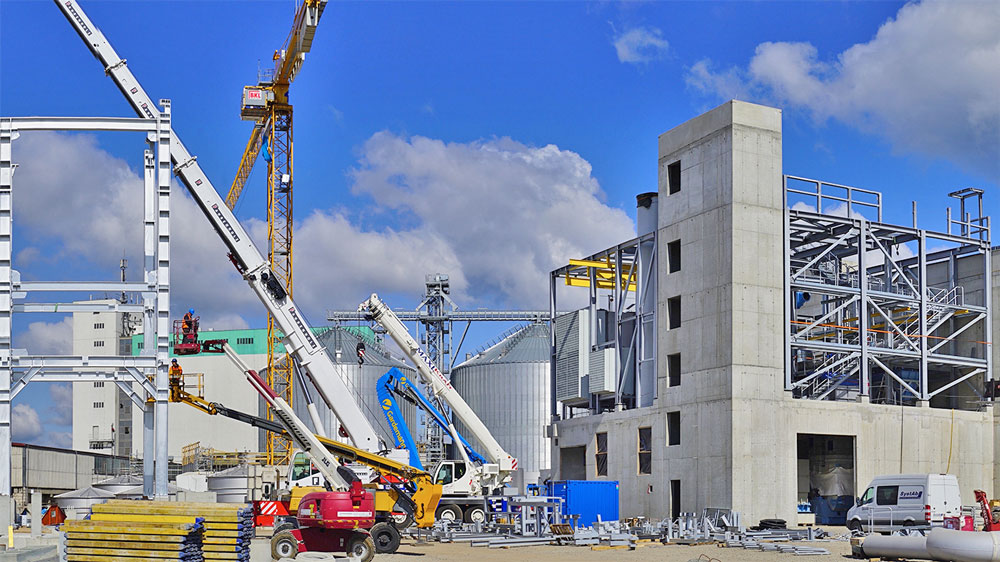Installing/dismantling of industrial equipment
Does it require a building/demolition permit?
The energy industry is heavily depending on usually large equipment of various types. Operators and their contractors inevitably perform actions on the installed equipment, either on site or at a different site (e.g. temporary removal for repairs/replacement/temporary usage at another facility etc.). As such, they need to know whether a construction/demolition permit is required for the work they plan to perform on such equipment. Special attention must be granted when intervening on the more complicated equipment qualified under the applicable legislation as ‘industrial installations and technological equipment’ (hereinafter ‘Industrial Equipment’).
General considerations
An Industrial Equipment can autonomously function on its own at any facility where it is installed (i.e. it is not intrinsically connected to function on a specific location) – e.g. compressors/turbines/pumps/generators etc. Usually, energy facilities involve several types of such equipment.
Judging from the Construction Law no 50/1991 (‘Construction Law’) point of view, one can say that an industrial facility generally includes:
- construction elements (e.g. foundations, walls, floors, ceilings, roof etc);
- utilities related elements (e.g. electrical, sanitary, climatization installations etc);
- Industrial Equipment.
Construction elements and the utilities related elements
It is beyond doubt that the construction elements and the utilities related elements must be authorised when constructed as well as when demolished. The ‘symmetry’ rule stating that “the works that need authorisation for building, also need authorisation for demolishing” is applicable.
Certain maintenance and repair works of such construction/utilities related elements do not entail a special permit provided that such works do not modify the resistance structure and/or the architectural aspect of the building (as per Art 11 of the Construction Law no 50/1991).
Industrial Equipment
When it comes to Industrial Equipment, things get complicated (particularly because it is a thin line of distinction between the construction elements and the equipment itself).
- Building works vs installation works for an Industrial Equipment
As per Art 3 of the Construction Law and Art 43 para (6) of the Application Norms of the Construction Law[1], only the construction elements, including the structures that support the Industrial Equipment, must be authorised. For example, if an equipment needs a cement foundation, such foundation needs a building/demolition permit when constructed/ demolished.
A clear distinction between the building authorisation procedure and the installation procedure must be made. When talking about installing Industrial Equipment another procedure becomes applicable (as per the Government Ordinance no 95/1999 concerning the quality of installation works of the industrial technological equipment). Such latter procedure can be performed at the same time or after the authorised construction works are finalized (and the reception protocol is signed).
In addition, depending on the nature of the Industrial Equipment to be installed, other special regulations might become applicable for installing, regular maintenance, repairing or decommissioning of Industrial Equipment (for example, regulations issued by the National Authority for Control and Approval of Boilers Pressure Vessels and Hoisting Equipment – Romanian: ISCIR).
- Demolition works of Industrial Equipment
Art 8 of the Construction Law provides that for decommissioning (dezafectarea) or dismantling (dezmembrarea) Industrial Equipment one needs a demolition permit.
This seems to us a little excessive: first, such procedure appears to exceed the object of the Construction Law (as the Industrial Equipment is an autonomous element that does not entail works similar to construction/demolition works; sometimes, it can be removed without any intervention onto the construction itself!).
Second, the theory of symmetry should be applied: if the installation of such equipment does not require a building permit, neither should its decommissioning/dismantling require a demolition permit.
Third, (as mentioned above) for Industrial Equipment other specific provisions may be applicable on a case-by-case basis (e.g. ISCIR regulations).
We have tried to obtain clarifying answers from the Ministry of Regional Development, but they replied saying that interpretation of the above-mentioned provisions falls under the jurisdiction of local authorities which are to apply them for each particular case. However, based on the supplementary comments received form the Ministry of Regional Development we have drawn several conclusions:
- No building permit is required if the intervention on an Industrial Equipment:
- does not modify the construction itself and/or of the utilities related to the building;
- is limited to the replacement of the equipment with another one of the same type/ technical characteristics.
- A building permit is required if the relocation of an Industrial Equipment leads to:
- the relocation of the construction itself, its supporting elements and/or of the utilities related to the building;
- interventions upon the existing constructions, including the structures that support the Industrial Equipment and/or the utilities related to the building.
Conclusions
We have noticed steps made towards clarifying the permitting procedure; there are several legal initiatives simultaneously advancing aiming to support al least some of the energy sectors. But such unclarities (as above presented) must be addressed – the legislator could address them either in the draft new construction law[2] or in the project of Code of Town and Country Planning, Urbanism and Constructions[3].
[1]Approved by Order no 839/2009 of the Ministry of Regional Development
[2] Our opinion on the new draft construction law may be consulted in the Energy Industry Review no 2/2018.
[3] Available at: http://www.mdrap.ro/proiect-de-hg-pentru-aprobarea-tezelor-prealabile-ale-proiectului-codului-amenajarii-teritoriului-urbanismului-si-constructiilor – as accessed on 28 May 2018.







